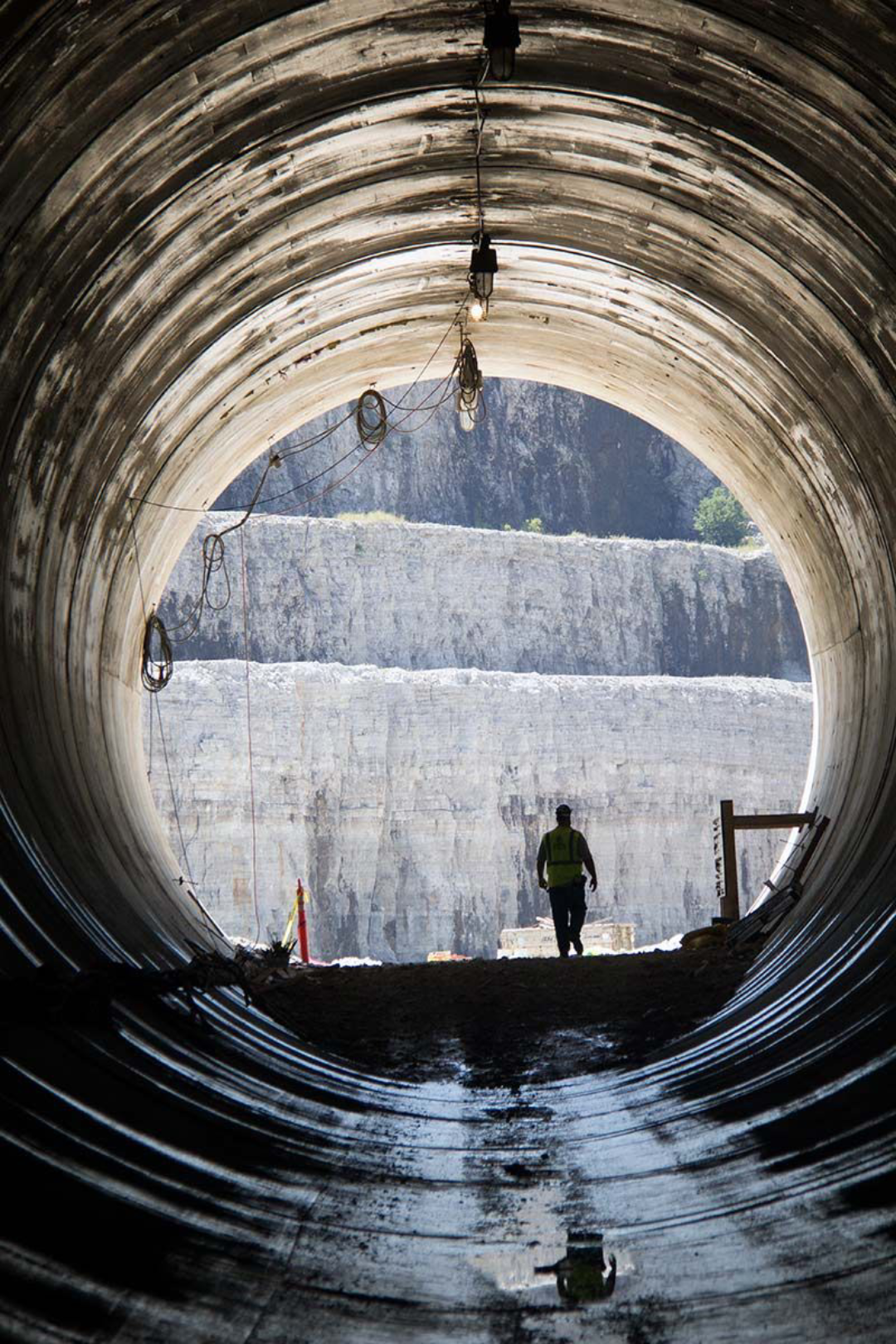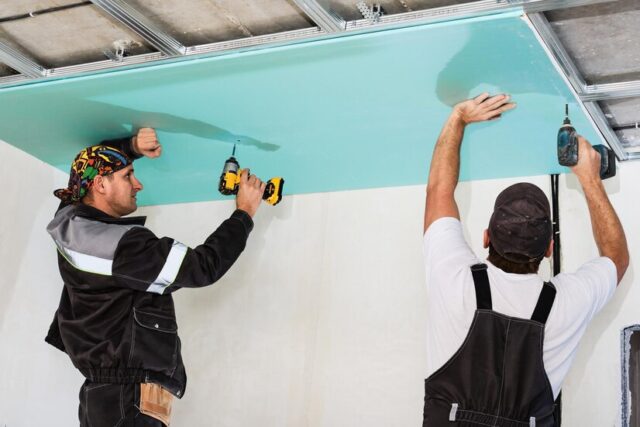Hudson River Tunnel Project Receives Key Approval and $6.88B Funding Commitment

Table of Contents:
IntroductionBackground of the Hudson River Tunnel Project
- Brief history of the project
Key Project Approval
$6.88 Billion Funding Commitment
Description of the Hudson River Tunnel Project
Impact on Economy and Employment
Environmental and Community Considerations
Timeline and ProjectionsComparison with Similar Projects
- Other similar transportation infrastructures
Future of the Hudson River Tunnel Project
Conclusions
Introduction to the Hudson River Tunnel Project:
The Hudson River Tunnel Project stands as a monumental endeavor that holds significant promise for regional transportation and economic development. Spanning the Hudson River, this ambitious project seeks to address critical infrastructure needs and enhance connectivity between New York and New Jersey. Its historical significance, coupled with the recent key approval and substantial $6.88 billion funding commitment, marks a significant milestone in the project’s journey. In this blog, we will delve into the background of the Hudson River Tunnel Project, explore the factors that led to its approval, and analyze the financial backing that propels it forward. Additionally, we will examine the project’s scope, potential economic impact, environmental considerations, and timeline for completion. As we embark on this journey, we’ll gain insights into how the Hudson River Tunnel Project is poised to transform the region’s transportation landscape and influence its economic trajectory for years to come.
Background of the Hudson River Tunnel Project:
The concept of a tunnel connecting New York City and New Jersey under the Hudson River dates back to the early 20th century when the existing North River Tunnels were constructed. These tunnels, completed in 1910, have been serving Amtrak and New Jersey Transit commuter trains for over a century.
As the years passed, the demand for transportation services across the Hudson River increased substantially. The aging North River Tunnels faced numerous challenges, including deteriorating infrastructure, capacity constraints, and frequent service disruptions. These issues severely impacted the region’s commuters and hindered economic growth.
Recognizing the urgent need for an updated and expanded tunnel system, discussions about a new Hudson River Tunnel Project gained momentum in the late 20th and early 21st centuries. The proposed project aimed to construct a new set of rail tunnels parallel to the existing ones, allowing for increased capacity, improved reliability, and enhanced transportation options.
However, progressing the project faced significant hurdles, including funding uncertainties, regulatory challenges, and complex coordination between various governmental entities. The magnitude of the undertaking and the involvement of multiple stakeholders further complicated the planning and approval process.
Despite these challenges, the critical importance of the Hudson River Tunnel Project was evident. It was seen as a linchpin for the entire Northeast Corridor, which is one of the busiest and most economically vital transportation corridors in the United States.
The Hudson River Tunnel Project gained increased attention and support from government officials, transportation advocates, and business leaders, who emphasized its potential to stimulate economic growth, create jobs, and enhance regional mobility.
Throughout its development, the project underwent numerous studies, environmental assessments, and public engagement initiatives to ensure that it meets safety, environmental, and community needs.
Recently, a major breakthrough occurred as the project received a key approval from the relevant authorities. Alongside this milestone, a substantial $6.88 billion funding commitment was secured from both public and private sources. This funding injection represents a major step forward, setting the project on a path to realization after years of planning and effort.
As the Hudson River Tunnel Project moves ahead with renewed momentum, its successful completion promises to alleviate congestion, enhance commuter experiences, and contribute to the overall prosperity of the region.
Key Project Approval:
After years of planning, negotiations, and assessments, the Hudson River Tunnel Project reached a critical juncture with a key project approval. This milestone represents a significant step forward in the project’s advancement towards construction and eventual completion.
The approval process involved careful consideration and evaluation by various governmental agencies, transportation authorities, and other stakeholders. The project underwent rigorous scrutiny to ensure that it aligns with safety standards, environmental regulations, and meets the region’s transportation needs.
Key factors that contributed to the project’s approval:
Transportation Necessity: The increasing demand for transportation services across the Hudson River necessitated the construction of a new tunnel. The existing North River Tunnels were operating at full capacity, resulting in delays, overcrowding, and service disruptions. The new tunnel was recognized as essential to alleviate congestion, improve reliability, and cater to future growth in commuter traffic.
Economic Impact: The Hudson River Tunnel Project was projected to have a significant positive impact on the region’s economy. The improved transportation connectivity was expected to create jobs, attract businesses, and stimulate economic growth. The project’s potential to enhance the movement of goods and people between New York and New Jersey was a compelling factor for approval.
Long-Term Benefits: The project’s approval hinged on its long-term benefits and the advantages it would offer to commuters, businesses, and the overall transportation network. The new tunnel’s increased capacity and reliability were seen as crucial components in enhancing regional mobility and providing commuters with more efficient travel options.
Collaboration and Support: The project gained traction due to the collaboration and support from various stakeholders, including government officials, transportation authorities, community leaders, and advocacy groups. Their collective efforts in advocating for the project’s importance played a vital role in securing the necessary approvals.
Funding Commitment: The availability of a substantial funding commitment of $6.88 billion played a crucial role in the project’s approval. The financial backing from both public and private entities demonstrated a strong commitment to realizing the project’s vision.
The approval of the Hudson River Tunnel Project marks a major milestone in its development. With the green light from the relevant authorities, the project can now move forward with its construction phase. However, challenges may still arise during the implementation process, and ongoing collaboration and coordination will be essential to ensure its successful completion. Nevertheless, the approval signifies a significant step towards addressing the region’s transportation needs and laying the foundation for a more connected and prosperous future.
$6.88 Billion Funding Commitment

The $6.88 billion funding commitment stands as a pivotal milestone in the realization of the Hudson River Tunnel Project. The substantial financial backing from various public and private entities provides the much-needed financial support to advance the project from planning to construction.
Breakdown of the funding commitment:
Government Contributions: A significant portion of the funding commitment comes from government sources at both the federal and state levels. Government entities recognized the strategic importance of the Hudson River Tunnel Project and pledged substantial financial support to ensure its successful implementation. These funds are earmarked for various aspects of the project, including construction, engineering, and environmental assessments.
Private Sector Investments: In addition to government contributions, private sector investments played a critical role in bolstering the funding commitment. Private companies, financial institutions, and other stakeholders saw the economic potential and long-term benefits of the project and committed financial resources to help bridge the funding gap.
Regional Partnerships: Regional collaboration and partnerships with local governments, transportation authorities, and business communities also contributed to the funding commitment. These partnerships fostered a collective effort to secure the necessary financial resources to move the project forward.
Utilization of the funding:
Construction Costs: The bulk of the funding commitment will be allocated to cover the construction costs of the Hudson River Tunnel. Building a new rail tunnel, along with associated infrastructure and systems, is a substantial undertaking that requires a significant financial investment.
Engineering and Design: A portion of the funds will be dedicated to engineering and design work. This involves detailed planning, architectural designs, and engineering studies to ensure the project meets safety standards and regulatory requirements.
Environmental Assessments: The project’s environmental impact assessments and mitigation plans will also be funded to ensure that the tunnel construction aligns with environmental regulations and minimizes its ecological footprint.
Contingency Reserves: To account for unforeseen challenges or changes during the construction process, a portion of the funding may be set aside as contingency reserves.
Overall, the $6.88 billion funding commitment provides the project with the necessary financial resources to move forward with confidence. This substantial investment demonstrates the widespread recognition of the project’s significance and its potential to transform regional transportation, stimulate economic growth, and improve the lives of commuters and residents in the New York-New Jersey metropolitan area.
It’s important to note that despite the substantial funding commitment, the project’s financial needs may evolve during its implementation, and additional funding sources may be required. Nonetheless, with this significant financial boost, the Hudson River Tunnel Project is poised to take substantial strides towards its ultimate completion and the realization of its broader positive impacts on the region.
Description of the Hudson River Tunnel Project:
The Hudson River Tunnel Project is a monumental transportation infrastructure initiative aimed at constructing a new set of rail tunnels beneath the Hudson River, connecting New York City and New Jersey. The project’s primary objective is to address the pressing transportation needs of the region by creating additional rail capacity and enhancing the reliability of cross-river travel.
Key aspects of the project:
Objectives and Scope:
- Increase Capacity: The project aims to add new rail tunnels alongside the existing North River Tunnels, which have been operating at full capacity for decades. The additional tunnels will significantly expand rail capacity, accommodating more commuter and intercity trains.
- Enhance Reliability: The new tunnels will improve the reliability of rail services by providing redundancy. In the event of maintenance or emergencies, the new tunnels will ensure that train services can continue to operate without significant disruptions.
- Improve Connectivity: By augmenting rail capacity, the project will strengthen transportation links between New York City and New Jersey, supporting the movement of commuters, tourists, and goods in the densely populated metropolitan area.
Technical Features of the Tunnel:
- Engineering Innovation: The Hudson River Tunnel Project involves cutting-edge engineering and construction techniques. Tunnel boring machines (TBMs) will be used to excavate the tunnels deep below the riverbed, minimizing surface disruptions during construction.
- Safety and Security: The tunnels will be designed to meet rigorous safety standards, incorporating advanced fire suppression systems, emergency evacuation procedures, and state-of-the-art security measures.
- Multi-Modal Integration: The project will integrate the new tunnels with existing rail infrastructure and terminals, enabling seamless transfers between various rail services and connecting transit modes.
Regional Transportation Benefits:
- Reduced Congestion: The project’s increased rail capacity will alleviate congestion in the existing tunnels, reducing delays and overcrowding during peak travel times.
- Faster Travel Times: The improved rail services will lead to faster and more efficient commutes for thousands of daily travelers between New York and New Jersey.
- Economic Growth: Enhanced transportation connectivity is expected to attract businesses, promote job creation, and stimulate economic growth in the region.
Overall, the Hudson River Tunnel Project represents a transformative initiative to modernize critical transportation infrastructure and address the challenges posed by aging and overburdened tunnels. As a vital link within the Northeast Corridor, one of the nation’s most significant transportation corridors, the project is poised to play a pivotal role in shaping the region’s future mobility and fostering economic prosperity.
Impact on Economy and Employment:

The Hudson River Tunnel Project is expected to have a substantial positive impact on both the regional economy and employment opportunities. The project’s significance lies not only in its transportation benefits but also in its potential to stimulate economic growth and create jobs in the New York-New Jersey metropolitan area. Here are some of the key ways the project is likely to impact the economy and employment:
Job Creation during Construction: The construction phase of the Hudson River Tunnel Project will be a major job generator. The scale and complexity of the project will require a diverse workforce, including engineers, construction workers, project managers, and various skilled tradespeople. The demand for labor during this phase will create employment opportunities for thousands of individuals, providing a much-needed boost to the local job market.
Supplier Industries and Services: The project will stimulate activity in supplier industries, such as construction material providers, equipment manufacturers, and transportation services. This ripple effect will create additional jobs in these sectors and support various businesses in the supply chain.
Economic Boost for Local Businesses: The influx of construction workers and project personnel will result in increased spending in the surrounding communities. Local businesses, such as restaurants, retail stores, and hospitality establishments, are likely to benefit from the increased customer base, contributing to economic growth at the neighborhood level.
Enhanced Commuter Productivity: The new rail tunnels’ increased capacity and reliability will lead to improved commuter experiences, reducing travel times and minimizing delays. This enhanced efficiency in daily commutes can result in increased worker productivity, which, in turn, can positively impact overall economic output.
Attracting Business Investment: Improved transportation connectivity between New York City and New Jersey will make the region more attractive to businesses seeking access to a larger labor pool. This enhanced accessibility may encourage companies to invest in the area, leading to job creation in various industries.
Stimulating Real Estate Development: The project’s completion may lead to increased real estate development and property values in areas near the improved rail infrastructure. Developers may be attracted to locations with better transportation access, leading to residential and commercial growth.
Long-Term Economic Benefits: Beyond the construction phase, the Hudson River Tunnel Project’s long-term economic benefits are projected to be substantial. The improved transportation network is expected to support economic growth by facilitating the movement of goods and people, bolstering trade, and encouraging regional development.
In summary, the Hudson River Tunnel Project’s impact on the economy and employment is expected to be multi-faceted and far-reaching. The project’s construction phase will create a significant number of jobs, providing a boost to the local workforce and supporting related industries. Additionally, the enhanced transportation infrastructure will attract business investment, stimulate economic growth, and improve the overall economic outlook for the region in the long run.
Environmental and Community Considerations:
Environmental and community considerations are integral aspects of the Hudson River Tunnel Project. As a major infrastructure undertaking, the project aims to address potential environmental impacts and engage with the communities it will directly or indirectly affect. Here are some key factors related to environmental and community considerations:
Environmental Impact Assessment:
- The project has undergone rigorous environmental impact assessments to identify potential environmental effects, such as habitat disruption, water quality impacts, and air emissions.
- Measures are being taken to minimize negative impacts on natural resources, wildlife, and sensitive ecosystems in and around the project area.
- Environmental regulations and guidelines are being followed to ensure compliance with federal, state, and local environmental standards.
Mitigation Measures:
- The project team is implementing mitigation measures to address identified environmental impacts. For instance, special care may be taken during construction to protect sensitive habitats or reduce noise and air pollution in residential areas.
- Green infrastructure and sustainable practices may be incorporated to reduce the project’s ecological footprint and promote environmental conservation.
Community Engagement:
- The project actively engages with the affected communities to gather feedback, address concerns, and incorporate community needs and preferences into the project’s planning and design.
- Public hearings, community meetings, and informational sessions are organized to keep the public informed about project updates and provide opportunities for community input.
Stakeholder Involvement:
- Various stakeholders, including local government bodies, community organizations, and advocacy groups, are involved in the decision-making process to ensure that the project’s development considers a diverse range of perspectives and interests.
- Engaging stakeholders helps build understanding and consensus on project goals, design, and mitigation strategies.
Resilience and Adaptation:
- Given the project’s long-term impact, resilience and adaptation strategies may be incorporated to ensure that the tunnel system can withstand and recover from potential climate-related challenges, such as sea-level rise and extreme weather events.
Economic and Social Impact:
- The project aims to evaluate and address potential economic and social impacts on communities, such as property values, land use, and access to transportation services.
- Initiatives to promote economic development, affordable housing, and equitable access to the project’s benefits may be considered to ensure that the project positively impacts the region’s diverse communities.
In summary, the Hudson River Tunnel Project demonstrates a commitment to addressing environmental and community considerations throughout its planning and implementation phases. By undertaking comprehensive environmental assessments, implementing mitigation measures, engaging with communities, and involving various stakeholders, the project seeks to balance transportation needs with environmental conservation and community well-being. These considerations are vital to ensuring that the project delivers long-term benefits while minimizing adverse impacts on the environment and the people who call the region home.
Timeline and Projections:
The timeline and projections for the Hudson River Tunnel Project are subject to various factors, including regulatory approvals, funding availability, and unforeseen challenges during construction. While specific details may evolve over time, here is a general outline of the anticipated timeline and projections for the project:
Pre-Construction and Design Phase:
- Conducting detailed engineering studies and design work to finalize project plans and specifications.
- Undertaking environmental impact assessments and obtaining necessary regulatory approvals.
Commencement of Construction:
- Initiating construction activities, including excavation and tunneling work, once all necessary approvals are in place.
- Commencing construction of associated infrastructure and systems, such as ventilation, electrical, and safety installations.
Mid-Construction Phase:
- Continuation of tunnel excavation and construction, with a focus on meeting designated milestones and progress targets.
- Ensuring adherence to safety and quality standards throughout the construction process.
Completion of Tunnels and Systems:
- Finishing the construction of the new rail tunnels under the Hudson River.
- Completing the installation of essential systems, such as electrical, signaling, and communication networks.
Testing and Commissioning:
- Conducting rigorous testing of the newly constructed tunnel systems to ensure safety and operational functionality.
- Coordinating with transit agencies and authorities to integrate the new tunnels into the existing rail network.
Operational Readiness:
- Finalizing preparations for the tunnel’s operational phase, which may include staff training, scheduling adjustments, and public awareness campaigns.
Inauguration and Start of Operations:
- The project’s official opening, with the new rail tunnels becoming fully operational for commuter and intercity rail services.
- Projected date of operations commencement.
Projections:
Increased Rail Capacity: The completion of the Hudson River Tunnel Project is expected to significantly increase rail capacity, easing congestion in the existing North River Tunnels and facilitating smoother, more reliable rail travel between New York and New Jersey.
Improved Commuter Experience: With expanded rail capacity and improved reliability, commuters are projected to experience reduced travel times and fewer delays, leading to enhanced productivity and convenience in daily travel.
Economic Impact: The project is anticipated to stimulate economic growth in the region, attracting business investments, creating jobs, and bolstering trade and commerce.
Enhanced Regional Connectivity: The improved transportation infrastructure is projected to enhance regional connectivity, enabling better access to job centers, educational institutions, and cultural attractions across the metropolitan area.
Environmental Benefits: By providing a more efficient transportation option, the project may lead to a reduction in greenhouse gas emissions and a decreased reliance on single-occupancy vehicles, contributing to improved air quality and reduced traffic congestion.
It’s important to note that timelines and projections are subject to change based on various factors, and the actual completion date and impacts may differ from initial estimates. Close monitoring, effective project management, and continuous collaboration with stakeholders will be crucial to achieving the project’s objectives within the projected timeframe.
Comparison with Similar Projects:
While the Hudson River Tunnel Project is unique in its own right, it shares similarities with other transportation infrastructure projects around the world. These projects aim to address similar transportation challenges and improve connectivity in densely populated urban regions. Here’s a comparison of the Hudson River Tunnel Project with some other similar initiatives:
Crossrail (Elizabeth Line) – London, United Kingdom:
- Similarities: Crossrail, now known as the Elizabeth Line, is a massive rail infrastructure project in London. It involves the construction of new tunnels and upgraded rail lines to improve connections across the city. Like the Hudson River Tunnel Project, Crossrail aims to increase capacity, enhance transportation efficiency, and stimulate economic growth.
- Differences: While both projects involve constructing new tunnels, Crossrail is an urban rail project within London, whereas the Hudson River Tunnel Project is an intercity rail project connecting two major metropolitan areas.
Grand Paris Express – Paris, France:
- Similarities: The Grand Paris Express is a large-scale public transportation project that includes the construction of new metro lines and extensions in the Paris metropolitan area. Like the Hudson River Tunnel Project, it seeks to enhance transportation infrastructure and connectivity, reduce congestion, and promote economic development.
- Differences: The Grand Paris Express focuses on expanding the city’s metro network, while the Hudson River Tunnel Project centers on creating additional rail capacity for regional and intercity rail services.
Sydney Metro – Sydney, Australia:
- Similarities: The Sydney Metro project is a comprehensive expansion of the city’s metro system, involving the construction of new metro lines and stations. Both projects aim to enhance public transportation options, alleviate traffic congestion, and improve overall urban mobility.
- Differences: While the Sydney Metro is concentrated within the city, the Hudson River Tunnel Project spans a significant distance under a major water body, connecting two separate states in the U.S.
Second Avenue Subway – New York City, USA:
- Similarities: The Second Avenue Subway project in New York City involved constructing new subway lines to address overcrowding and improve transit services. Both projects are vital urban transportation initiatives that aim to enhance capacity and reduce strain on existing transit systems.
- Differences: The Second Avenue Subway focuses on subway lines within New York City, while the Hudson River Tunnel Project encompasses rail tunnels connecting New York City and New Jersey.
Each of these projects reflects the global trend of investing in transformative transportation infrastructure to address growing urbanization and mobility challenges. The common goal of enhancing connectivity, reducing congestion, and stimulating economic growth unites these projects, while their unique contexts and specific regional needs dictate their distinct approaches and solutions. The successful implementation of these initiatives serves as a testament to the importance of investing in robust transportation infrastructure to support thriving cities and regions.
Future of the Hudson River Tunnel Project:
The future of the Hudson River Tunnel Project is filled with promise and potential to transform regional transportation and bolster economic development. As a critical infrastructure initiative, the project is expected to shape the future of the New York-New Jersey metropolitan area in several key ways:
Enhanced Regional Mobility: Once completed, the new rail tunnels will significantly increase capacity and reliability, providing commuters with improved transportation options. This enhanced regional mobility will facilitate easier access to job centers, educational institutions, and cultural attractions, fostering greater connectivity and a more vibrant metropolitan area.
Economic Growth and Job Creation: The improved transportation network resulting from the project is likely to attract businesses, stimulate economic growth, and generate job opportunities. As companies take advantage of the enhanced connectivity between New York City and New Jersey, the project’s impact on the regional economy is projected to be substantial.
Environmental Sustainability: By offering a more efficient and attractive alternative to driving, the project may encourage a shift from single-occupancy vehicles to rail transit. This transition could lead to a reduction in greenhouse gas emissions and air pollution, contributing to improved air quality and environmental sustainability in the region.
Modernization of Transportation Infrastructure: The Hudson River Tunnel Project represents a significant investment in modernizing critical transportation infrastructure. By utilizing advanced engineering and construction techniques, the project sets a precedent for future infrastructure initiatives that prioritize efficiency, safety, and long-term resilience.
Long-Term Benefits for Generations: The project’s long-term impact is anticipated to benefit current and future generations. By addressing the region’s transportation needs, the new rail tunnels are poised to serve as a vital transportation link for decades to come, supporting urban growth and development.
Influence on Policy and Planning: The successful implementation of the Hudson River Tunnel Project may serve as a model for future infrastructure projects and influence transportation policy and planning on both local and national levels. Lessons learned from the project’s execution could inform future decision-making processes.
Regional Collaboration and Partnerships: The collaborative nature of the project, involving various stakeholders, underscores the importance of regional cooperation in tackling complex infrastructure challenges. The project’s success may foster stronger partnerships between different jurisdictions and encourage joint efforts on other critical regional initiatives.
Resilience and Adaptation: In the face of climate change and its potential impacts, the project’s designers and engineers may have incorporated resilience and adaptation measures to ensure the long-term viability and functionality of the tunnel system.
However, the future of the Hudson River Tunnel Project also relies on continued commitment from all stakeholders involved. Challenges may arise during construction, and funding needs to be sustained to see the project through to completion. Nevertheless, with the key approval and substantial funding commitment in place, the project is poised to make a lasting impact on regional transportation, the economy, and the lives of those who call the region home.
Conclusions
In conclusion, the Hudson River Tunnel Project stands as a transformative and monumental undertaking with the potential to shape the future of transportation and economic growth in the New York-New Jersey metropolitan region. With key project approval and a substantial $6.88 billion funding commitment, the project is on track to address critical transportation challenges and create lasting positive impacts.
Through the construction of new rail tunnels beneath the Hudson River, the project aims to enhance regional mobility, reduce congestion, and improve transportation connectivity. The increased rail capacity and improved reliability are expected to benefit commuters, businesses, and the overall economy.
The project’s successful implementation is contingent on addressing environmental and community considerations. Rigorous environmental impact assessments, mitigation measures, and community engagement are vital to ensuring that the project aligns with sustainability goals and meets the needs of local communities.
As the project progresses, it is likely to create significant employment opportunities during the construction phase, stimulate economic growth, and attract business investments. Additionally, the improved transportation network may contribute to environmental sustainability by reducing greenhouse gas emissions and promoting more sustainable travel options.
While the project’s timeline and projections may evolve over time, it represents a forward-looking investment in modernizing critical transportation infrastructure. The lessons learned from its execution may influence future transportation policy, planning, and collaboration among regional stakeholders.
The Hudson River Tunnel Project embodies the power of collective effort and collaboration between government entities, private sector partners, and the community. As the project advances towards completion, it will stand as a testament to the significance of investing in robust transportation infrastructure to meet the evolving needs of a growing metropolitan area.
Ultimately, the successful realization of the Hudson River Tunnel Project will not only enhance regional mobility and economic prosperity but also leave a lasting legacy for generations to come, shaping the future of the region’s transportation landscape and fostering continued growth and prosperity for all who call it home.





